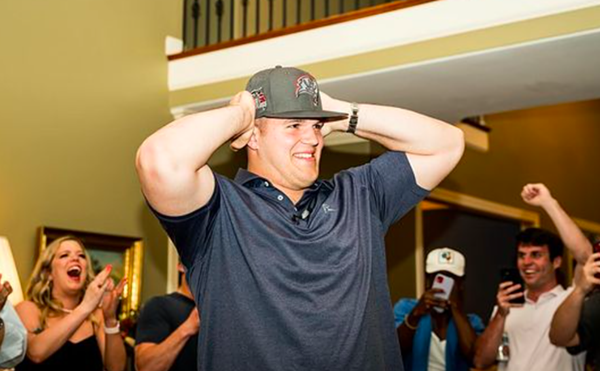This is what Keith writes about his mother:
“What can you say about the first woman in your life? She was Mum. She sorted me out. She fed me. She was forever slicking my hair and straightening my clothes – in public. Humiliation. But it’s Mum. I didn’t realize until later that she was also my mate. She could make me laugh. There was music all the time, and I do miss her so.”
[image-1]Pardon me while I look for my hankie.
The pre-publication buzz was all about Keith’s comment on the size of Mick’s willie. But the off-hand note Keith makes about girlfriend/singer Marianne Faithfull being dissatisfied with Mick’s “tiny todger,” could be taken a number of ways. And that’s it for disparaging his business partner’s penis. The book is honest and straightforward with its ugly passages about heroin addiction and withdrawal. But it’s not a gossip-filled rag. It’s a class act in a sea of smarmy celebrity memoirs.
Keith paints a complex portrait of his partnership with Mick. For the rock ’n’ roll fans, this is priceless – not because of any dirt or small-dick jokes – but because it’s the back-and-forth in this relationship that has given us a tremendous body of great music.
A lot of the songs seem to have come this way: Keith would discover a riff in his head, put it with a title and then come up with one line and a concept to flesh out that idea. He’d pass it on to Mick who would take these scattered bits and turn them into coherent (well . . . mostly) songs. Keith marvels at the ability and work ethic of his songwriting partner. And though Mick’s preening and social-climbing annoy Keith, he also admits his childhood friend grew up to be one of the greatest performers of his time.
There’s a lot of stuff about jealousies – mostly when Keith adopted Florida’s country rocker Gram Parsons as his best friend and musical co-conspirator. Mick wanted to be No. 1 in Keith’s life. Keith, on the other hand, had room for a lot of No. 1’s.
Here’s some more from my dog-eared pages:
On what he learned from Bo Diddley and John Lee Hooker: “It was listening to them that made me realize that silence was the canvas. Filling it all in and speeding about all over the place was certainly not my game. With five strings you can be sparse; that’s your frame.”
On Gram Parsons: “You wouldn’t have had Waylon Jennings or the outlaw movement without Gram Parsons. He showed them that . . . country music isn’t just this narrow thing that appeals to rednecks. . . . The music’s bigger than that. It should touch everybody . . . His effect on women was phenomenal. He had a unique hold on that particular string, the female heart. My feet were soaking from walking through tears.”
[image-2]On writing with Mick: ”We also composed using what we called vowel movement – very important for songwriters. The sounds that work. Many times, you don’t know what the word is, but you know the word has got to contain this vowel, this sound.”
For anyone who ever wondered about Keith’s relationship with model / actress / junkie Anita Pallenberg, mother of three of his children (one of whom died of crib death), Keith doesn’t hold back. It was a train wreck of a life, which they both managed to survive, so you have to cheer when we finds a happy ending with Patti Hansen, with whom he’s had two daughters and a serene and lovely life in Connecticut. We also learn that the Stones’s 1973 classic “Angie” was not written about Angela Bowie, wife of David, but was instead a father’s love song to his daughter Angela. Keith’s surviving children with Anita, Marlon and Angela, also turn up in the book as those rare rock-star kids who aren’t fucked up.
If you love rock ’n’ roll and don’t have this book already, then you must buy it.
And if you’re shopping for the rock’n’roll lover in your life, buy the Keith book, then get The Girl in the Song (Chicago Review Press, $14.95) as a stocking stuffer. Michael Heatley’s book is one of those books music lovers devour.
Heatley gives us the history behind some of the great rock songs of our time and who inspired them. They’re mostly girlfriends and wives, but sometimes children.
It’s good to know the identities of the real “Sweet Caroline,” “Peggy Sue” and “Gloria.” This is much more than a good rock trivia – it’s also a nice collection of thumbnail histories, and it goes great as a dessert after the seven-course meal Keith Richards serves up in Life.
William McKeen chairs the journalism department at Boston University and is the author of several books, including the acclaimed Hunter S. Thompson biography Outlaw Journalist, available in paperback. Mile Marker Zero, his book about Key West in the Seventies, will be published in October.














